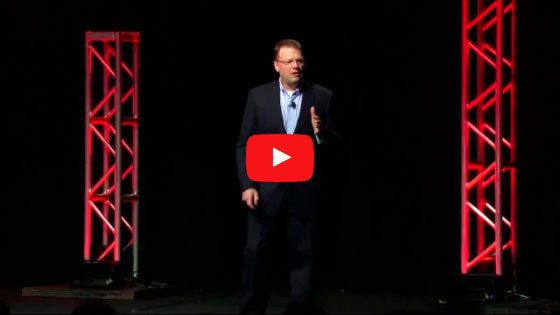The quote above is from Conrad Wolfram, the renowned British mathematician, well known as an advocate for the advancement of mathematics teaching. He argues that teaching students how to calculate using computers is more effective and more liberating than teaching calculation by hand. In his talk at TEDGlobal 2010, he describes his four-step process to solve a math problem:
- Pose the right question
- Formulize the question
- Computation
- Verifying that the computation answered the question
Currently, Wolfram believes 80 percent of math education focuses on step three – computation – and teaching people how to compute by hand. Instead, he proposes “…we ought to use computers to do step three, so students can spend much more effort on learning how to do steps one, two and four – conceptualizing problems, applying them.”
The proper development and utilization of modern computer systems, including hardware and software advances, should enable Wolfram’s vision to come true, with users moving their allocated time away from calculations and process – stage three issues – and moving it to conceptualizing problems and applying the solutions effectively. And through my recent hands-on experience, I am confident that Risk Modeler will truly allow risk analysts to modify that time allocation. I shared my experience of Risk Modeler on the keynote stage at Exceedance, and I invite you to watch the video below.

In 1999, a Legend Was Born
Many of you reading this may not realize it, but RiskLink® celebrates its 18th birthday this September. RiskLink was born in 1999, and for some of you, RiskLink started its cat modeling career before you did. I can remember using RiskLink back then, and it is a testament to the quality of that product that it is still the predominant catastrophe modeling software. I’ve grown up with it, many of us have, and with that kind of longevity and familiarity, it is no wonder that few people even consider or question what can be an elongated process involved in completing an analysis, using this bedrock of catastrophe management.
That process to access your analysis is a lot of work. File management, model profile management, financial perspective re-maps, system restrictions. Wolfram’s assumption looks reasonable, that up to 80 percent of your natural catastrophe modeling time is spent in this process.
We’ll celebrate 18 successful years of RiskLink, but the market is shifting to an embrace of big data analytics. This creates great timing for Risk Modeler. Risk Modeler is built specifically to work with large amounts of data to remove the procedural, tactical component of your work and move it to an efficient and speedy system.
How Would You Use Your Process Time?
This reallocation of process allows you to spend more time using your experience and intuition to conceptualize, understand and guide your business more effectively. You can start to ask and answer questions that anticipate the business’ needs. You can spend more time proactively working on change management with your key stakeholders. You can work more directly with the underwriting teams to understand and differentiate risks more thoroughly.
Risk Modeler is an efficient interface between your insight and experience and the analytical power of cloud-based computing. It allows you to simply ask a question, and it delivers the answer. Mr. Wolfram reminds us that, “…math is not equal to calculating. Math is a much broader subject than calculating…I think of calculating, in a sense, as the machinery of math. It’s the chore. It’s the thing you’d like to avoid if you can, like to get a machine to do.”
Modeling is more than process, which is the chore of risk modeling. I am excited that Risk Modeler is that system capable of completing that chore for you. You can now unleash your energy, creativity, insight, and experience on improving your company, your industry and to help make the world more resilient.





